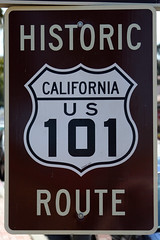The two short tutorials below will show you how to add impact to your blog posts with images and video.
Insert Image with Caption
Insert YouTube Clip
The two short tutorials below will show you how to add impact to your blog posts with images and video.

In our PR Writing class, we’ll all blog about the same topic each week during the semester. Your TOWs of 300 words or longer should be posted by Sunday at midnight at the end of each week, unless otherwise notified in class. (Posts that appear past the deadline may not earn any credit, so be sure to stay on top of your blogging deadlines.)
Be sure to check to see if you receive any comments on your posts, and respond to your commenters as appropriate.
If you are unsure how to get started writing these TOWs, many times you can use this three-pronged approach:

Public relations practitioners are increasingly called upon to be well-versed in social media. This semester, you will blog as about one-third of your grade in our class. You will add content to your blog weekly throughout the semester. Feel free to continue to use an existing blog of yours, unless you feel compelled to start fresh with a new blog for this course.
My WordPress 101 post will help you get started with your blog.
To make it easier for your readers to find what they are seeking at your blog, it’s important to use Categories. Please add a category for each type (listed below), and make sure each post is categorized appropriately. Each post for this class must have the category of “COMM 4333” along with at least one additional category.
1. TOW: Topic of the Week – Each week this semester, we will have a specific topic that all students will blog about. You should have at least 13 of these before the end of the semester. At times, you will watch a video, listen to a podcast, or read a specific blog post, and provide your thoughtful reactions. These posts must be a minimum of 300 words. We’ll keep our running list of TOWs for your class here at my blog.
2. PR Connections – Provide commentary, reflections and opinions about PR issues/examples that were not addressed in class. These can be responses to other PR blogs you read, links to interesting posts or articles, embedded YouTube videos, etc. Some students like to choose a theme (such as entertainment or sports PR) and have each PR Connection be related to the theme. Though these don’t have a minimum word length, you will need to adequately discuss your subject in the post, rather than simply embedding a video with no commentary of your own. You should write at least 10 of these during the semester.
3. Blog comments – whenever you comment on someone’s PR blog (whether it’s a PR professional or a PR student), add the comment to a blog post (that you have created for this purpose) that you update throughout the semester so I can assess your online participation. Do this only for PR-related blogs. You should have a minimum of 12 comments by your Blog Checkpoint #2 and at least 20 (total) before the end of the semester. See Tracking Your Blog Comments for Nixon’s Classes for more information.
You may add other categories and sub-categories of your choice. Please keep in mind that when I evaluate your blog I will pay special attention to the categories listed above, but I will not ignore other posts. I will perform a holistic evaluation of your blog, looking for:
SUPER-IMPORTANT: In order for you to get credit for your blog, I need to know where it is. Tell me your blog address by completing this Google Form; I will provide time in class during Week 3 for you to do this.
Questions? Just let me know.
NOTE: Many thanks to Dr. Mihaela Vorvoreanu at Purdue University, who allowed me to use her blogging guidelines from her PRinciples class; Dr. V knows that Blogs Matter.

Students in most of my classes have blogging as a component of their grades. Many of them have rarely even read blogs, no less written one of their own. In this post, I am combining many posts I’ve previously written to help them get started in WordPress.
Review the slides in my “Getting Started in WordPress” presentation below. In this presentation, you’ll learn
Watch some of the many FAQ screencasts provided by WordPress to help you with the step-by-step instructions. (Though some of the videos are for previous versions of WordPress, most of the functionality remains the same.) Here are a few of the best ones to help you get started on the right foot:
Read the blogging tips I’ve provided in various posts here at Public Relations Matters.
And though you may have a good handle on the technical aspects of blogging, remember that the technical side is only part of the blogging equation. Corinne Weisgerber, a professor at St. Edward’s University and fellow PROpenMic member, created this presentation for her Social Media for PR class. The emphasis? How blogging can help you create your personal brand online. Take a look. It’s worth the time.
Remember to let me know your blog address by completing this Google Form. If I can’t find your blog, I can’t grade it. Hint, hint.

In COMM 4633 (Social Media for PR), we’ll all blog about the same topic each week during the semester. Your TOWs should be posted by Sunday midnight at the end of each week.
Some weeks have more than one topic listed; choose one of the available topics on those weeks.
If you have a topic to suggest, please add it as a comment to this blog post.
If you are unsure how to get started writing these TOWs, many times you can use this three-pronged approach:
Which types of social media you currently participate in (such as blogging, podcasting, social networking, etc.), which platforms you use, and why? Which platforms have you considered, but haven’t yet tried?
Why is it important to include images in blog posts? What are some approaches to choosing effective images and ensuring that you have the right to use them in a post?
Is social media monitoring ethical? Provide commentary and discussion on both sides of the issue, and offer your personal viewpoint.
Write a post related to your assigned chapter in Groundswell. Provide links to several of the examples mentioned in your chapter, or to new sites that relate to the chapter. See if you can find a YouTube video or SlideShare presentation and embed it in your post. (Remember to link to the book, either at Amazon.com or at the publisher’s website/blog.)
Which Super Bowl ad was either your favorite OR least favorite? Embed the ad in your blog. And in your discussion of the ad, be sure to discuss the publics that were targeted in the ad. (Be sure your readers can tell if you liked or disliked the ad.)
OR
Adam Vincenzini asked on Twitter and on his blog for people to share their definitions of “social media” with him, in 140 characters or fewer. Read through the list of definitions that were shared with Adam. Pick a few that resonate with you and discuss why these definitions “work” for you. Develop your OWN 140-character definition of social media. Tweet your definition, and embed the tweet in your blog.
“Social Media: Friend or Foe?” :: Listen to Shel Holtz, Mark Ragan and others discuss “concerns and objections around the adoption of social media communication channel.” React to it using the three-pronged approach, discussed earlier in this blog post. (NOTE: Mark Ragan is playing the role of an executive who is unsure if social media is right for his organization.)
Participate in a public relations or social media Twitter chat. Petya Georgieva provides a list of 13 possibilities at her Higher & Higher blog. (I highly recommend #PRStudChat, which meets on January 18 and February 15, but you are free to chose from any of the 13 options.) Before you participate in the chat, be sure to read Shonali Burke’s tips for how to make the most of a Twitter chat. After the chat, briefly describe the purpose and intended audience of your chosen chat. React to your own participation in the chat using the three-pronged approach (discussed earlier in this blog post).
Since our focus for this week is podcasting, write this week’s TOW on something related to podcasting. Potential areas for discussion include: what would drive an organization to choose a podcast as a way of connecting with its internal or external publics, the importance of shownotes, technology you can use for podcasting or how PR majors can benefit from listening to PR podcasts.
This week’s topic was inspired by Adam Vincenzini’s Be My Guest month: post something by a guest blogger. Connect with another blogger (it can, but doesn’t have to, be someone in your class) and exchange blog posts for the week. (You don’t have to write something new . . . share your favorite post you’ve written this semester.) In your own blog, make it really clear that the post is written by another person, and link to your guest’s blog.
What is this Foursquare thing that we keep seeing in our Twitterstreams? How can companies benefit from it? And what are some of the potential dangers of using Foursquare (and other location-based services) for individual participants?
OR
Pinterest has taken the Internet by storm in the past few months. What is it, and how can (some) companies or organizations benefit from using Pinterest?
Set up an account at Diigo, a social bookmarking site. Create social bookmarks to at least 20 sites; these could include classmates’ blogs, PR blogs, your university, your favorite musical artist or actor, etc. In your Topic of the Week, share a link to your Diigo account. Discuss how college students (especially those working in groups) could benefit from social bookmarks. Be sure to include a link to your Diigo bookmarks in your blog post. Optional: how could an association, like the Florida Public Relations Association or the International Listening Association, use social bookmarks to benefit its members?
One of this week’s readings concerned widgets and badges. After briefly describing the difference between a widget and a badge, offer suggestions on how one specific organization you are a part of (or wish to become a part of) could benefit from using widgets or badges.
Just what is it that makes a simple little video like “David After Dentist” become a Viral Video? Also, embed at least two of your favorite videos that went viral and explain why you chose them.
Of all the professional and peer blogs you read (and commented on) this semester, which ones are your favorites? Pick at least one from each category (professional and peer), and explain why you chose them.
You’d think that businesses, especially large ones that have a social media presence, would realize by now that social media is 24/7. Apparently, Papa John’s didn’t get the memo.
Minhee Cho, Communication Manager at ProPublica, posted her receipt from her last night’s pizza order at about noon today. Retweets and comments about her treatment from this Papa John’s employee started swirling.
And they swirled for nearly seven hours before Papa John’s responded via Twitter. Luckily, the Papa John’s (tardy) response is an appropriate one, at least in my book.
But here’s the thing: I wonder how many people will continue to retweet Ms. Cho’s original tweet, and never even know that Papa John’s apologized and explained its course of action? Here’s a link to a Twitter search for #papajohns OR @papajohns.
Something to think about, especially for brands with broad name recognition.

An Open Note to All of Prof. Nixon’s Students:
Welcome back to our Communication Department at Southeastern University; I hope your Christmas break was a blessed one. I spent a lot of much-needed time with family.
Syllabi for my two Spring 2012 on-campus classes are available at my Scribd site. If a syllabus is updated during the semester, you’ll find out in class, and the current version will always be available at Scribd.
So that we can make the most of this semester, please (Please, PLEASE) take some time to read through the blog posts I’ve included here. I promise you, it will be well worth your time. (How often do professors let you get inside their heads, letting you know their tips for success and their pet peeves?)
Additionally, here are a few more tips:
Let’s make this a great semester together!
(PS: If you’re one of my Spring 2012 students reading this post, please leave a reply to this post so that I can know you have read it. If your reply doesn’t show up immediately, no worries — I may need to approve it before it appears, if you’ve never commented on my blog before.)

Of all the years I’ve lived through, 2011 does not rank up there as one of my favorite ones. If you know me, or “know me” virtually, you will probably be able to predict why. But I’ll get to that soon enough.
My Southeastern University class created this list of 26 things people should know about writing for digital media. Some focused on writing for digital media in general, while others focused on succeeding in her class of the same name. (Note: A couple of the letters are missing, as Twitter is being a wee bit wonky this morning. I will do my best to add in D and M as soon as I can.)
What other tips would YOU add to this list?